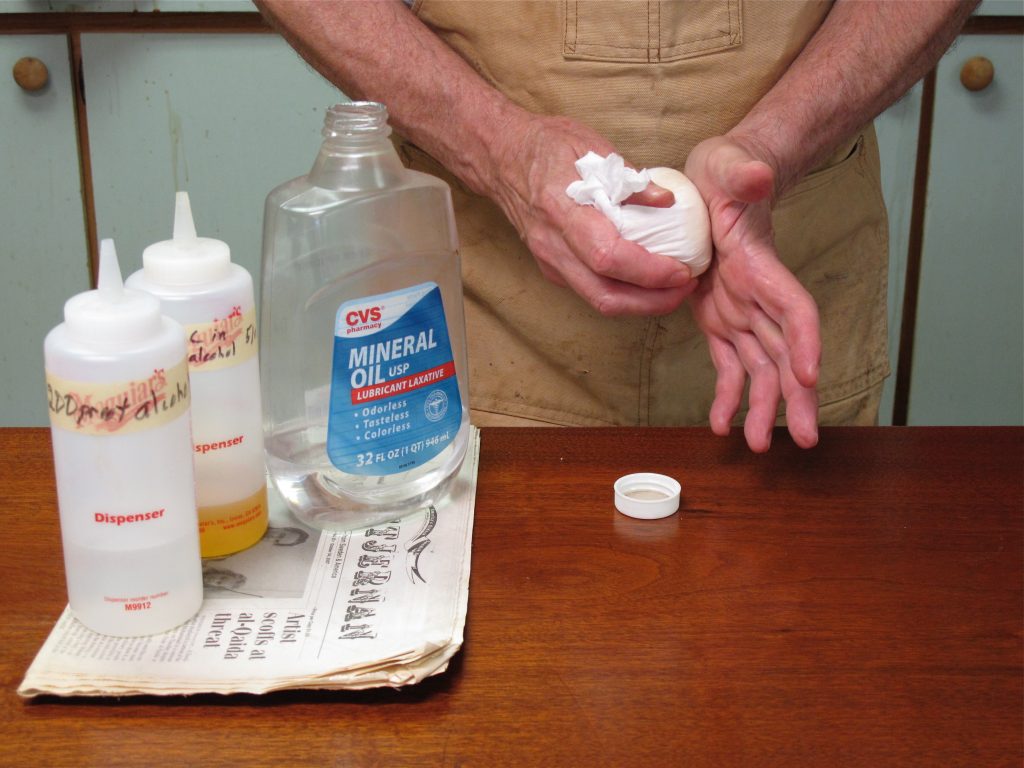We may receive a commission when you use our affiliate links. However, this does not impact our recommendations.

I tried to take a picture of scratches showing through the high-gloss French-polish finish, but there was too much reflection. In this picture I show what I use when French polishing (from the left) containers of denatured alcohol, shellac and mineral oil. I put some of the first two on a pad, add a few drops of mineral oil I take from the cap and tap the pad against my hand to disperse it all.
Here’s a situation you may have experienced if you do much French polishing. A woodworker friend emailed me with this problem. He had been French polishing a tabletop, and no matter what he did, he could still see sanding scratches when he viewed the surface from certain angles.
Logically, he thought, fresh coats should fill the scratches so they wouldn’t be seen anymore. But this wasn’t happening. The scratches still showed no matter how fine a grit sandpaper he sanded up to between coats. Why was this happening?
With other finishes that he brushed or sprayed, his experience was that he could sand coats to a very fine grit and any scratches that he could see would disappear. Why wasn’t this happening when he French polished?
I think the explanation is that the high-gloss shellac highlighted sanding scratches he had made in the wood. Sanding between coats wouldn’t have any affect on these scratches, which were underneath.
Other finishes just aren’t as glossy as shellac. In fact, they are usually dulled with flatting agents to create a satin sheen, or the topcoat is rubbed out with an abrasive such as steel wool at the end. So scratches in the wood aren’t highlighted. If I’m correct in this diagnoses, he is going to have to remove all the work he’s done down to the wood and sand it to a finer grit, being sure that each grit totally removes the scratches from the previous, coarser grit.
This is what is critical. It’s not enough just to use finer- and finer-grit sandpaper. The coarser scratches underneath have to be removed. To see what’s happening it’s helpful to look at the wood at a low angle in a raking light. It can also help to wet the wood with a solvent such as mineral spirits (paint thinner). Scratches show up better.
Here are some supplies and tools we find essential in our everyday work around the shop. We may receive a commission from sales referred by our links; however, we have carefully selected these products for their usefulness and quality.










Bob, would you expect to see 220 grit sanding scratches in wood under a high gloss French polish finish? What about 600 grit ANSI sanding scratches in the finish, not the wood, again in a high gloss French polish or rubbed out finish, if multiple coats of shellac are applied after the 600 grit sanding? Thanks.
I would think you would want to sand to as high a grit as possible, making the valleys that the shellac needs to fill as small as possible, building up a glass finish quicker. i.e 1200+